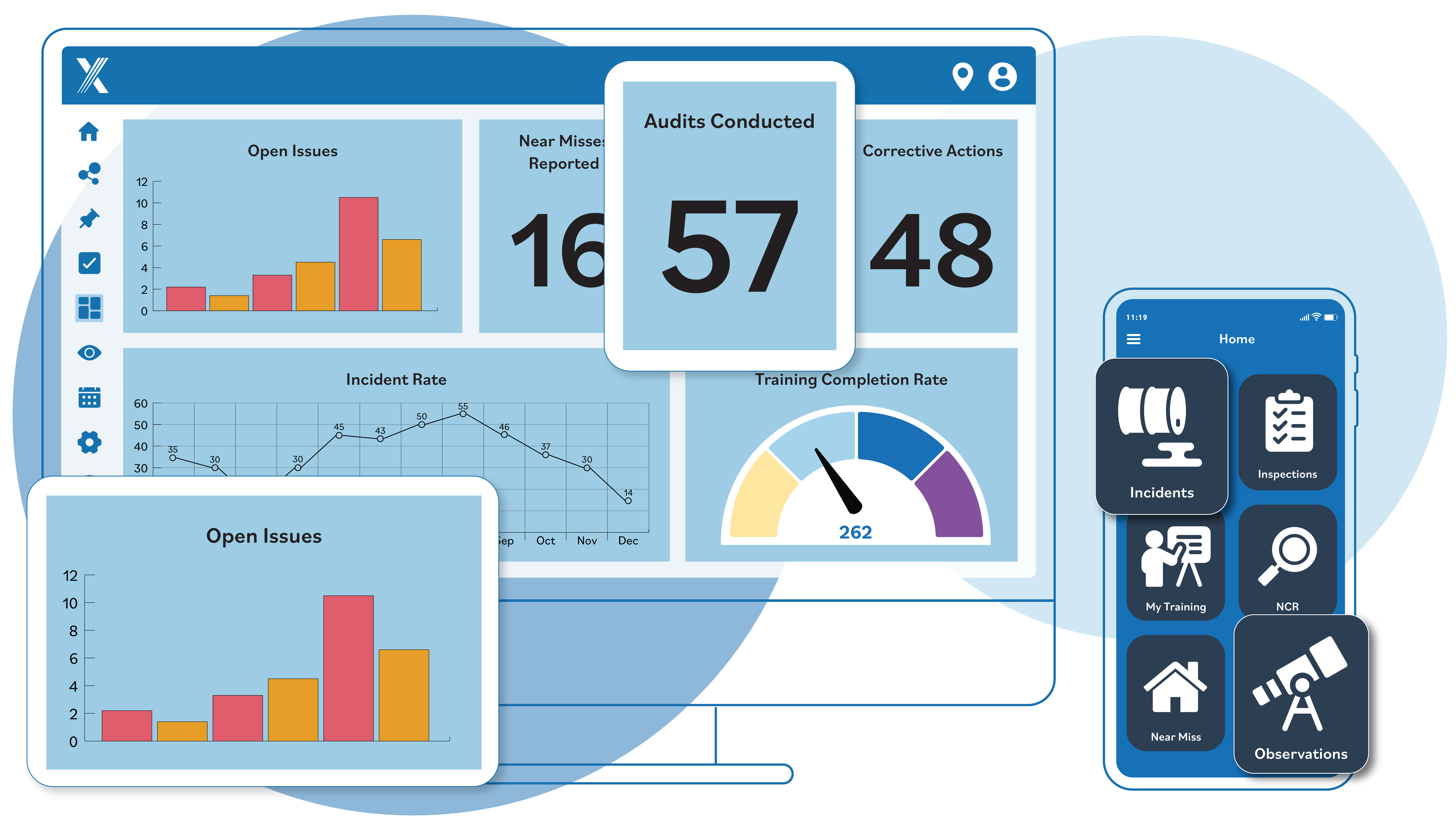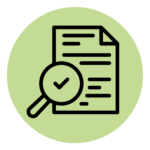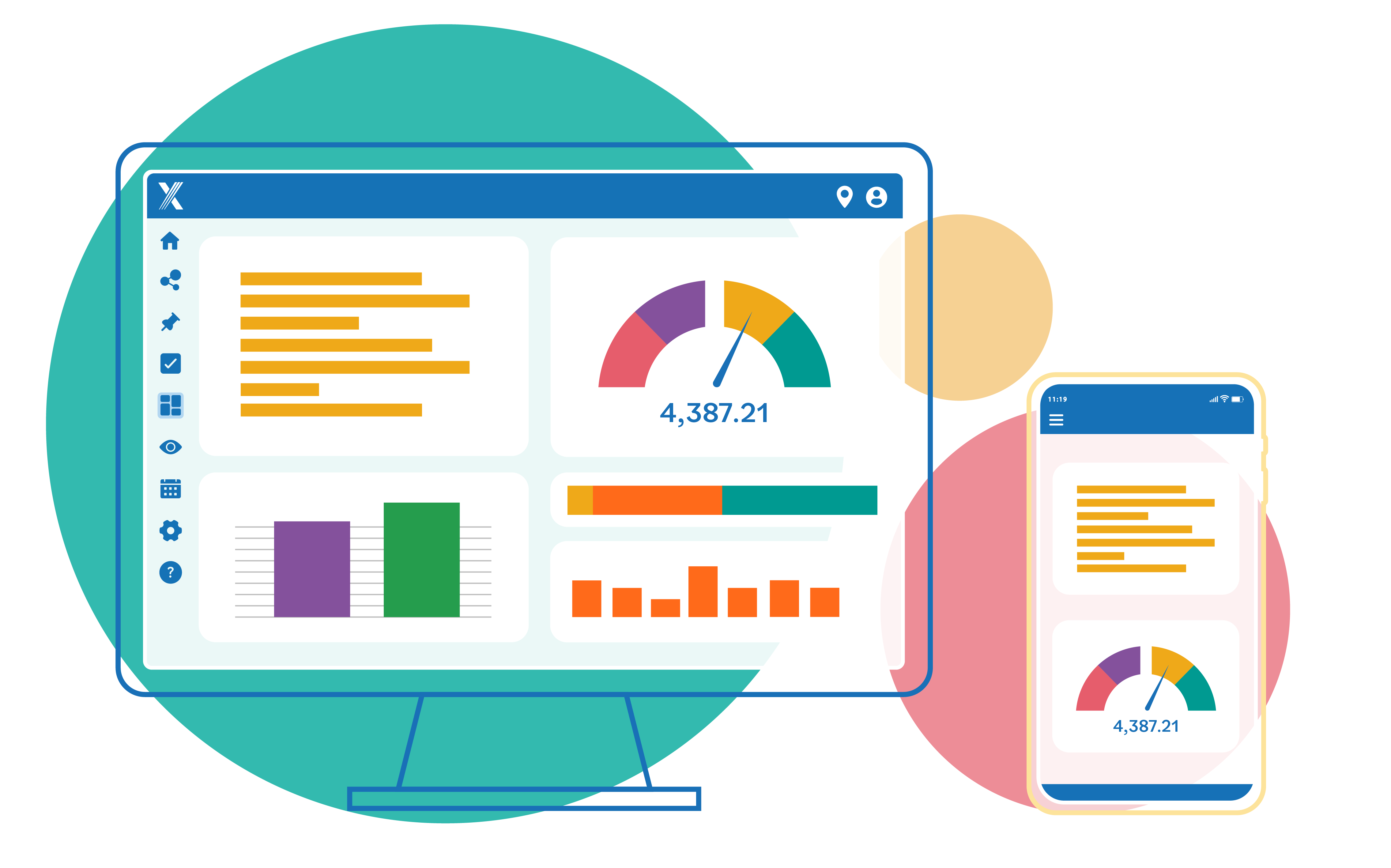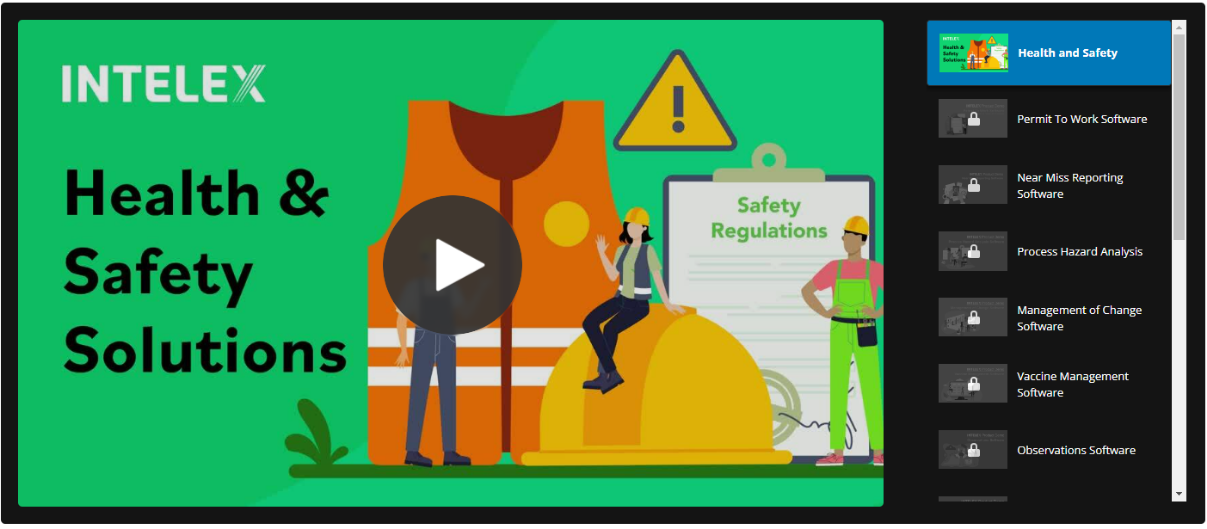House Your EHS Management System on One Platform
One system means one source of truth. Act faster, stay compliant, and drive measurable improvements in safety and sustainability across your entire operation.

Trusted by Leading Organizations Around the World





What are the 3 areas of focus for an EHS Management System?
An Environmental Health and Safety Management System focuses on promoting worker health by preventing illness and injury, ensuring safety through hazard identification and training and protecting the environment by reducing pollution.

Environment
Control environmental impacts by sourcing clean energy, cutting energy costs and reducing risks like spills and leaks.

Health
Support worker health by preventing illness, injury and chronic disability while ensuring productive operations.

Safety
Manage your work processes to identify safety hazards and prevent workplace incidents, accidents, illnesses and injuries.
Key Features of Intelex EHS Software
Dedicated companies choose Intelex to drive continuous improvements in their programs.

Reports and Dashboards
EHS reports and dashboards provide real-time data, helping you track performance and make informed decisions.

Mobile App
EHS mobile apps give you access to critical safety data on the go, enabling quick reporting and real-time updates.

Incident Management
Incident management allows you to log, track and investigate workplace incidents to prevent future occurrences.

Observation Management
Observation management features robust checklists and intelligent workflows to escalate high-risk situations instantly.

Audit Management
Audit management streamlines the audit process, helping you track, organize and ensure compliance with standards.

Training Management
Training management helps track and deliver essential safety training, ensuring compliance and reducing workplace risks.
Boost Safety and Compliance with EHS Management Software
EHS software simplifies compliance for supervisors and empowers frontline workers with tools for safety and reporting.

- Streamlines compliance processes, reducing manual administrative tasks.
- Provides real-time data for better decision-making and risk management.
- Tracks incidents and audits, ensuring timely resolution and follow-up.
- Enhances safety training, improving workplace health and safety outcomes.
- Empowers workers to report observations and prevent potential risks.
- Simplifies incident reporting with easy-to-use mobile tools.
- Provides quick access to safety procedures and training resources.
- Improves communication on hazards and real-time safety updates.
EHS Management System Demo Playlist
The Intelex EHS Management System demo playlist provides an in-depth overview of the software's features and functionalities, showcasing how it can streamline compliance, incident management and reporting processes.

But Don't Take Our Word For It
Frequently Asked Questions
An EHS Management System is an organization-wide framework designed to manage safety, health, and environmental risks and compliance obligations. It includes the policies, procedures, practices, and software to ensure compliance with regulations, protect workers and communities, and improve overall operational performance.
EHS stands for Environmental, Health and Safety. It refers to the practices, regulations and systems designed to ensure the protection of the environment, worker health and workplace safety. EHS programs help organizations comply with regulations, reduce risks and create safer, more sustainable operations.
EHS software (short for Environmental, Health, and Safety software) helps companies keep people safe, protect the environment, and stay compliant with local, industry-specific, and federal regulations. It centralizes critical information in one connected platform that is accessible via desktop or mobile, making it easier to report and fix issues, streamline processes, and make better decisions backed by stronger data.
EHS (Environmental, Health and Safety) and HSE (Health, Safety and Environment) refer to the same principles but in different word order. HSE is more commonly used in the UK, while EHS is prevalent in the US. Both focus on workplace safety, protecting worker health and minimizing environmental impact.
Around the world, governments set and enforce rules to keep workplaces safe and environmentally responsible. Requirements vary by country and company size—larger organizations often face stricter regulations and more frequent audits, while smaller businesses have fewer but still important obligations.
- In the U.S., the OSH Act of 1970 created OSHA to prevent workplace injuries and illnesses. OSHA enforces health and safety standards, providing education, training, and support.
- In the UK, the HSE is the independent regulator focused on preventing workplace illness, injuries, and deaths. It enforces standards through inspections and reporting.
- The EU's European Framework Directive outlines general principles for workplace safety, assigning employer and employee responsibilities.
- ISO 45001:2018 helps organizations establish EHS management systems to prevent work-related injury and illness. ISO 14001:2015 focuses on effective environmental management to support ESG goals.
ISO 45001 defines the scope of an EHS management system as creating a safe, healthy work environment by identifying, mitigating and eliminating workplace risks that could harm workers’ well-being.
It covers:
- Context of the Organization: Understand the internal and external factors affecting health and safety.
- Leadership: Ensure top management commitment to the EHS system.
- Planning: Assess risks and opportunities, setting clear objectives and processes.
- Support: Provide the necessary resources, training and communication to sustain the system.
- Operation: Implement the plans to achieve safety and health goals.
- Performance Evaluation: Measure and evaluate EHS performance for ongoing improvement.
- Improvement: Identify and act on opportunities to improve EHS performance.
The scope and maturity of an EHS management system vary by industry, region, and company size. Highly regulated sectors or countries often require more advanced systems, but across the board, certain core components are essential:
- Policy & Objective Setting: Defines clear EHS policies and goals aligned with company values.
- Incident Reporting: Captures, tracks, investigates and reports incidents and near-misses, including injurie and property damage.
- Audit Management: Schedules, tracks, and reports internal and external audits, ensuring compliance across locations and jurisdictions.
- Document Control: Manages documents throughout their lifecycle, controls access to sensitive files, reduces errors and improves visibility.
- Training Management: Plans and tracks EHS training for a global workforce, helping build a strong safety culture and staying updated on regulations.
- Regulatory Compliance: Adheres to EHS regulations and proves compliance through inspections and audits, collecting and analyzing data to meet industry standards.
EHS management system software helps organizations manage environmental, health and safety processes. It collects and stores data in one central place, making it easier to track incidents, illnesses and safety risks. The software simplifies the preparation of documents for audits and inspections and helps identify the root causes of incidents. With this information, you can create Corrective and Preventive Action (CAPA) plans to prevent future problems, ensuring a safer, more compliant workplace.
EHS software helps you create, manage and improve your organization’s safety system. It saves time and money by keeping employees safe, reducing risks and making compliance with regulations easier. With real-time reporting, everyone stays informed, from leadership to workers. EHS software also improves overall safety performance, helping to keep your employees healthy, happy and safe.
Yes, modern EHS software significantly enhances how organizations manage environment, health, and safety programs. By centralizing data into a single, accessible platform, it eliminates silos and ensures teams have real-time visibility into risks, compliance, and performance. Automation streamlines routine tasks like incident tracking and audit scheduling, while mobile tools empower employees to report issues or complete checklists from the field, improving both response times and data quality. Advanced dashboards and analytics give leadership clarity on leading and lagging indicators, enabling proactive decision-making.
Expand your EHS management knowledge
with these featured resources
ON-DEMAND WEBINAR
EHS Management Software System Demo
This nine-minute product demo highlights some of the core EHS software applications and functionality Intelex has to offer. Watch and get a feel for our system’s usability and breadth of features that support managing and streamlining key elements of your organization’s EHS program. Watch in real-time how Intelex’s EHS software solutions will allow your organization to:
- Record and manage EHS incidents from both a desktop or mobile device.
- Create, schedule, and perform any type of audit.
- Build and distribute two-way communication ‘bulletins’ to your employee base.
- Easily configure reports that help you discover trends, isolate hotspots, and communicate progress on mitigation.
 1 877 932 3747
1 877 932 3747








